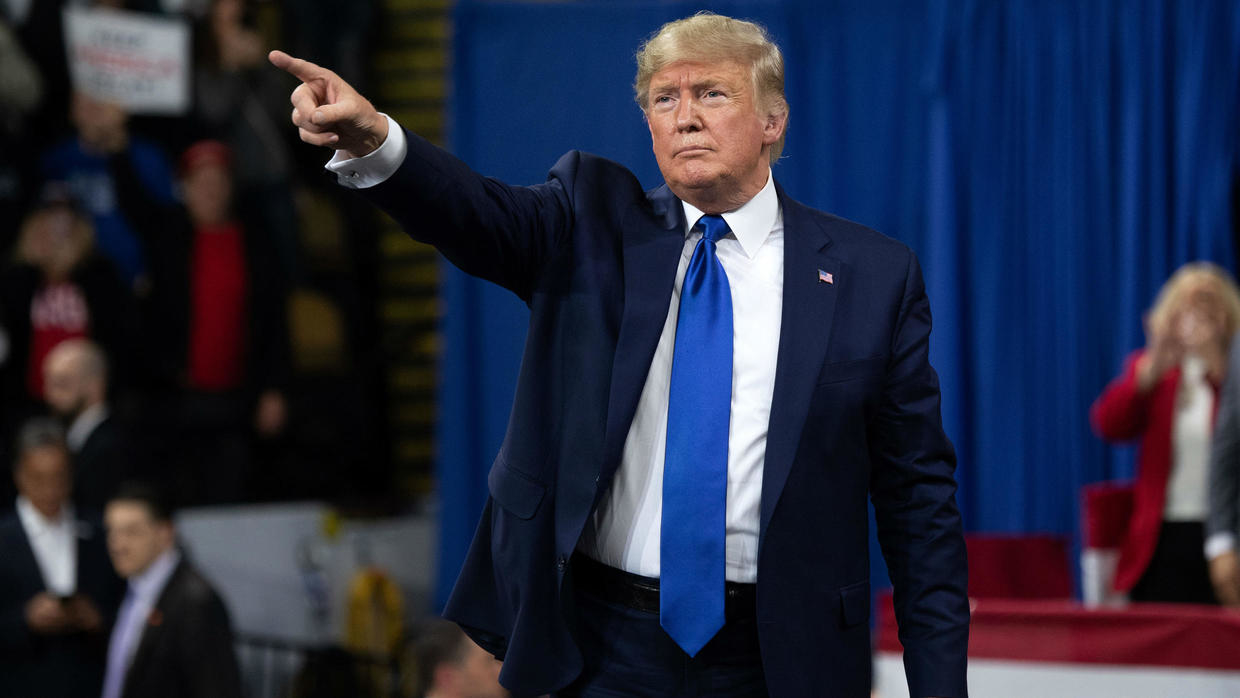Trump Vows to Revamp Economy in 2024 Run
21.07.2024 12:00 1 min. read Alexander Stefanov Source: https://www.barrons.com/articles/trump-election-economy-markets-inflation-debt-deficit-8a5c19b5?mod=hp_HERO
Source: https://www.barrons.com/articles/trump-election-economy-markets-inflation-debt-deficit-8a5c19b5?mod=hp_HERO
In Milwaukee, former President Donald Trump accepted the Republican presidential nomination after a high-energy four-day event.
Trump’s acceptance speech, spanning 92 minutes, was a blend of unifying rhetoric and pointed criticisms of his adversaries, portraying a nation in decline under current leadership.
Trump’s vision for a second term promises even more dramatic shifts than his first. He highlighted his capability to resolve global issues swiftly and outlined an aggressive economic agenda. His new approach could mark a stark departure from his previous policies, aiming to overhaul U.S. economic strategies.
If victorious in November, Trump could lead with a Republican Congress and a strengthened Supreme Court. His vice-presidential pick, Senator JD Vance, reflects his influence over the GOP, despite Vance’s previous criticisms of Trump.
Current economic conditions might play in Trump’s favor, with potential Federal Reserve rate cuts boosting economic activity and stock markets. However, the increase in government debt from new tax cuts could strain the bond market, pushing up long-term interest rates.
Trump’s consolidation of Republican support and the shifting economic landscape contribute to growing forecasts of a GOP sweep in the upcoming election, with analysts predicting a likely unified Republican government.
-
1
Billionaire Slams Meme Stock Hype and Sounds Alarm on U.S. Fiscal Health
15.06.2025 18:00 2 min. read -
2
Nassim Taleb Says Global Trust Is Shifting from the Dollar to Gold
22.06.2025 17:00 1 min. read -
3
Geopolitical Shockwaves Hit Ethereum Hard While Bitcoin Stays Resilient
22.06.2025 16:21 1 min. read -
4
U.S. Recession May Already Be Locked In, Economist Warns
23.06.2025 12:00 1 min. read -
5
Tom Lee Warns Fed Could Trigger Market Turmoil With Delayed Pivot
22.06.2025 19:00 3 min. read
Robert Kiyosaki Predicts When The Price of Silver Will Explode
Robert Kiyosaki, author of Rich Dad Poor Dad, has issued a bold prediction on silver, calling it the “best asymmetric buy” currently available.
U.S. PCE Inflation Rises for First Time Since February, Fed Rate Cut Likely Delayed
Fresh data on Personal Consumption Expenditures (PCE) — the Federal Reserve’s preferred inflation gauge — shows inflation ticked higher in May, potentially delaying the long-awaited Fed rate cut into September or later.
Trump Targets Powell as Fed Holds Rates: Who Could Replace Him?
Federal Reserve Chair Jerome Powell is once again under fire, this time facing renewed criticism from Donald Trump over the Fed’s decision to hold interest rates steady in June.
U.S. National Debt Surge Could Trigger a Major Crisis, Says Ray Dalio
Billionaire investor Ray Dalio has sounded the alarm over America’s soaring national debt, warning of a looming economic crisis if no action is taken.
-
1
Billionaire Slams Meme Stock Hype and Sounds Alarm on U.S. Fiscal Health
15.06.2025 18:00 2 min. read -
2
Nassim Taleb Says Global Trust Is Shifting from the Dollar to Gold
22.06.2025 17:00 1 min. read -
3
Geopolitical Shockwaves Hit Ethereum Hard While Bitcoin Stays Resilient
22.06.2025 16:21 1 min. read -
4
U.S. Recession May Already Be Locked In, Economist Warns
23.06.2025 12:00 1 min. read -
5
Tom Lee Warns Fed Could Trigger Market Turmoil With Delayed Pivot
22.06.2025 19:00 3 min. read


